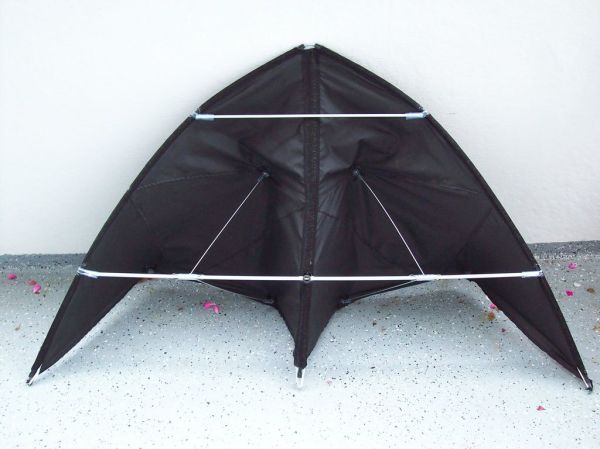How many broken umbrellas have you thrown out in your life? [BigApe] has come up with a novel way to reuse them, by turning them into kites.
The beauty of the build is in the MacGyver-style material list. Apart from a few store bought 8mm aluminum and plastic tubes, the majority of the build is out of other scraps that you can easily find around the house. Spokes from a broken bicycle wheel, plastic from a CD case, elastic bands, yarn, some washers, an empty hair gel tube, the list goes on… We really have to give him credit on the creative material choices!
Now before you get too excited, this project does involve quite a bit of sewing, so a sewing machine would be quite handy. Other than that, only basic tools such as pliers, scissors, punches, matches, drill bits, and a saw, are required.
The finished product ends up being a bit heavier than most similar sized consumer-grade delta kites, but [BigApe] achieved some kite-like flight out of it in low wind speeds. He promises to post a test video when it gets a bit windier to prove his design.
On the topic of kites, earlier this year we covered a remote-controlled, autonomous, power generating kite!


















